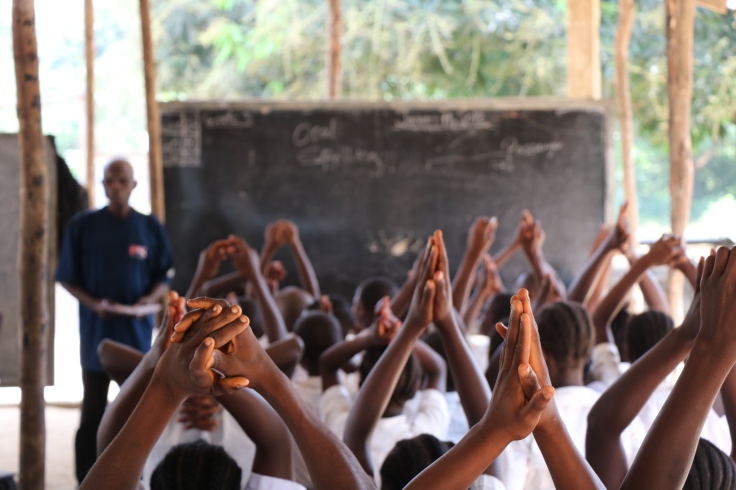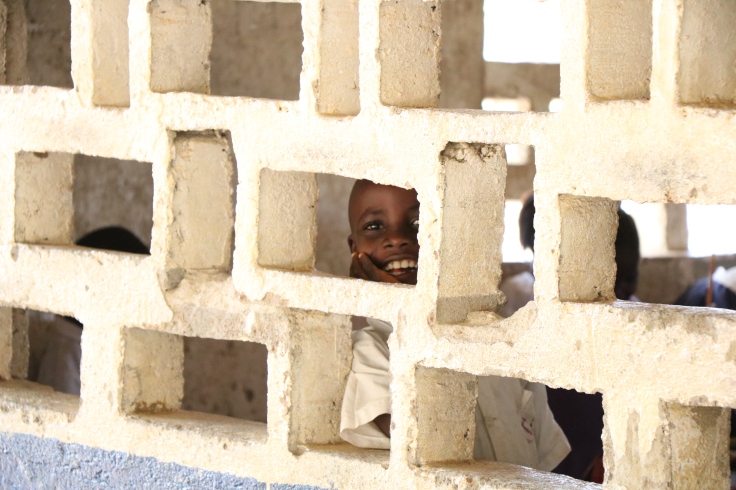Wednesday morning last week, we left on our first assignment outside of Monrovia, headed for the county Cape Mount, a jungly landscape in the northern interior of the country, about three hours away by car.
The aim of the trip was distributing the latest batch of learning materials to the students and monitoring the rural schools that Street Child supports as part of the Partnership Schools for Liberia programme (PSL). This is an initiative similar to that of the academies in the UK, where NGOs and social enterprises take over struggling state schools to help boost the nation’s educational levels, and create a sustainable model to copy going forward.
Currently Liberia has the most out-of-school primary aged children in the world, and they are expected to reach universal education last out of any country, so this is a crucial project for the government. My role would be to accompany them, interviewing staff, community members and pupils to gauge the success of the project so far and their ongoing challenges, as well as collecting case studies, photo and video content for the UK team to use for publicity and donor support.
We piled up the Street Child jeep with the materials for the two clusters of schools we were visiting, and headed out to the field base near to them. Unfortunately, the journey turned out to be more complicated than expected. Our jeep started repeatedly overheating and spewing steam from the engine, despite the efforts of the mechanics in a few villages, until it finally gave up and we had to coast over to the side of the road. We pulled up next to an enormous palm plantation, with lorries jam packed with the plantation’s workers, kitted out in welly boots, machetes and quizzical looks on their faces, as they passed us in clouds of dust, crowded around our steaming vehicle.
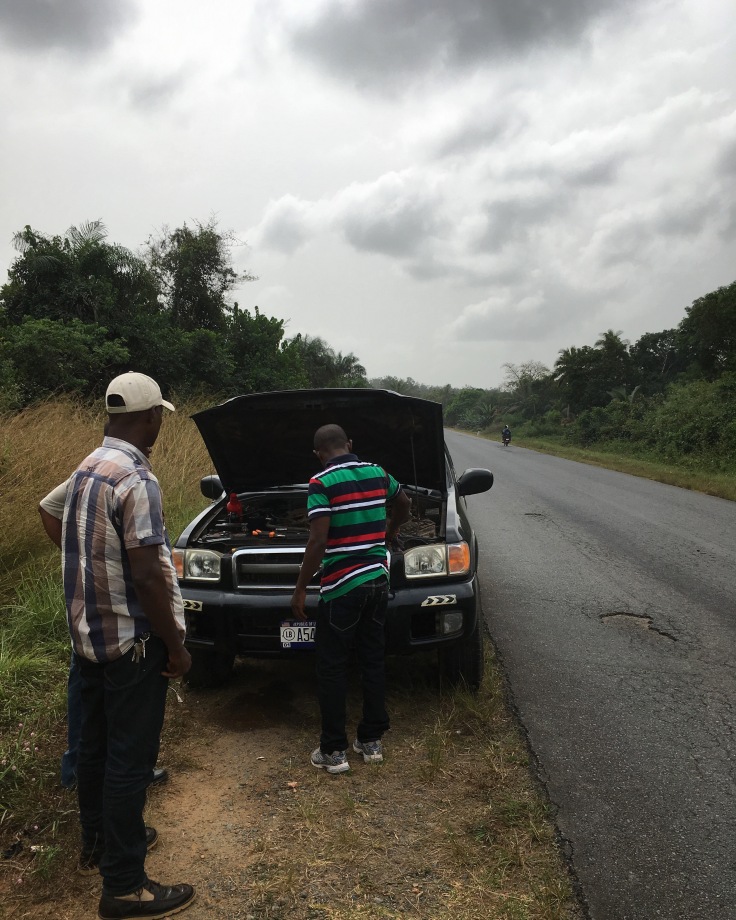
Street Child’s second jeep was then dispatched to come and collect us so we could continue the trip, but as the hours went on with no contact with the driver, we realised that this one too had broken down, somewhere along the road out of mobile reception. Following a lot of heated discussion with the staff at the HQ, we continued onto the field base by taxi, with seven of us crammed into an old Nissan Micra. The second driver thankfully then arrived late that night, with his jeep fixed and ready to begin work the next day, now with seven schools to visit in two days.
As we passed out of Monrovia and into the country’s jungle interior, the concentrations of houses quickly fell away, and the long winding roads were just sporadically dotted with small villages of traditional houses, made with bricks from the clayey soil, reinforced with palm thatch and bamboo poles. Occasionally we passed through a larger town, marked by a short strip of roadside stores and food stalls, with the air thick with the smell of sizzling skewers of meat and fish, and pulsing with the sound of Afrobeats and R&B blasting from tiny speakers.
Early the next morning, filled up on rice and ‘potato greens’ (a stew made of the dark leaves from a potato plant, dried fish and chicken, palm oil and chilli – heavy on the last two), we made our way out to the first cluster of schools, about 10km along a rutted dirt road, way out in the bush. Our jeep was struggling as it was, overladen and with the suspension crunching as it pitched and rolled through each crater. In the rainy season however, these roads become almost impassable, with the huge ruts hidden beneath the torrent flowing down them, and the wheels desperately skidding for traction, especially as they pass over the treacherous homemade bridges of felled tree trunks.
Each school we visited was slightly further along a branching side road, with a few just on the outskirts of a village on the open plains, and others hidden in a clearing deep within the trees, where you would need a machete to hack through every metre of the impenetrable jungle vegetation, high on either side of the road.

At each one, the staff quickly set to work, with the Programme Director and the Cluster Leader discussing with the Principal the recent progress and challenges of their school, while the other staff members distributed the materials to the classes of students in turn.
Lined up in orderly single file, their joy and excitement at receiving new exercise books and stationery was unbelievable. It really makes you appreciate how precious the opportunity to have an education is, and how much it is cherished by some people around the world.
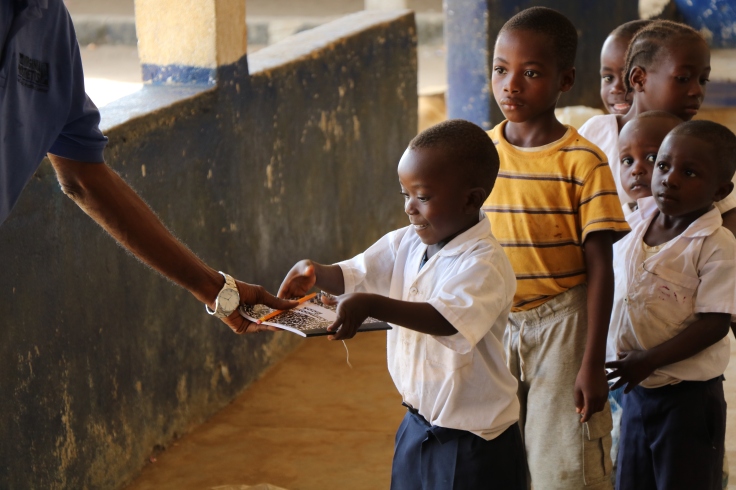
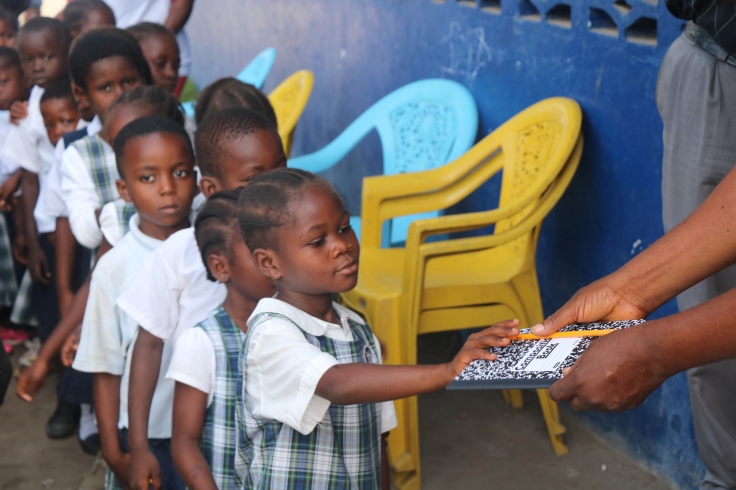 Living in very remote villages, most of the children walked one to two hours to school every day, but as they and their teachers explained, it was without doubt the best part of their day. Interviewing teachers and pupils, every one of them shared a similar story. Many of them had lost their parents and a large part of their family in the civil war and the Ebola Crisis, and so life was tough for them at home. Most of them can usually only afford to eat once a day, and as schools currently charge a fee each semester to help with the upkeep of buildings and materials etc., their caregivers often can’t afford to send them to school. When they can, it is usually the older children’s education which is prioritised, and the younger children have to spend the day at home.
Living in very remote villages, most of the children walked one to two hours to school every day, but as they and their teachers explained, it was without doubt the best part of their day. Interviewing teachers and pupils, every one of them shared a similar story. Many of them had lost their parents and a large part of their family in the civil war and the Ebola Crisis, and so life was tough for them at home. Most of them can usually only afford to eat once a day, and as schools currently charge a fee each semester to help with the upkeep of buildings and materials etc., their caregivers often can’t afford to send them to school. When they can, it is usually the older children’s education which is prioritised, and the younger children have to spend the day at home.
The case studies and wellbeing assessments we were collating, combined with the experiences of the social workers, also showed numerous other challenges, with several of the students as young as thirteen already teenage mothers, and other children abused by friends or family, especially when they were out on the streets selling to help support their families.
For eight-year-olds, right through to sixteen-year-olds, school was overwhelmingly identified as a place they felt ‘happy and safe’, where for at least a few hours a day, they could just be kids and enjoy themselves playing with their friends, being taught skills to help them work towards a brighter future.
